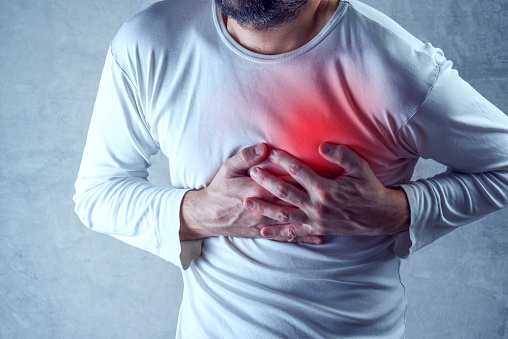Introduction
Heart attacks are a leading cause of death and disability worldwide. A heart attack, also known as a myocardial infarction, occurs when the blood flow to a part of the heart is blocked, causing damage to the heart muscle. Early recognition of the symptoms and prompt treatment can greatly increase the chances of survival and minimize long-term damage.
What is a Heart Attack?
A heart attack is a type of cardiovascular disease that occurs when the blood flow to the heart is blocked by a build-up of plaque in the coronary arteries. This can cause damage to the heart muscle, leading to chest pain and other symptoms. In severe cases, it can be life-threatening.

What Causes a Heart Attack?
- The most common cause of a heart attack is the buildup of plaque in the coronary arteries, the blood vessels that supply blood to the heart muscle.
- Plaque is made up of fat, cholesterol, and other substances in the blood. Over time, plaque can build up and narrow the coronary arteries, reducing the flow of blood to the heart.
- When a piece of plaque breaks off, it can form a blood clot that can completely block the flow of blood to the heart muscle.
Symptoms of a Heart Attack
- Chest pain or discomfort: This can feel like pressure, fullness, squeezing, or pain in the center of the chest that lasts for more than a few minutes, or goes away and comes back.
- Shortness of breath: This can occur with or without chest pain.
- Pain or discomfort in the arms, back, neck, jaw, or stomach.
- Nausea or vomiting
- Lightheadedness or dizziness
- Breaking out in a cold sweat
- Unusual fatigue or weakness
Risk Factors for Heart Attack
- Age: The risk of heart attack increases as you get older.
- Family history of heart disease.
- Smoking: Smoking increases the risk of heart attack by damaging the blood vessels and increasing the buildup of plaque.
- High blood pressure: High blood pressure can damage the blood vessels and increase the risk of heart attack.
- High cholesterol: High levels of cholesterol in the blood can increase the risk of heart attack.
- Diabetes: People with diabetes have an increased risk of heart attack.
- Obesity: Being overweight or obese can increase the risk of heart attack.
Prevention of Heart Attack
- Healthy lifestyle choices: Eating a healthy diet, getting regular physical activity, and not smoking can help lower the risk of heart attack.
- Managing medical conditions: Keeping high blood pressure, high cholesterol, and diabetes under control can lower the risk of heart attack.
- Regular check-ups: Regular check-ups with a doctor can help identify and treat potential risk factors for heart attack.
- Early treatment of symptoms: Prompt treatment of symptoms such as chest pain can greatly increase the chances of survival and minimize long-term damage.
Conclusion
Heart attacks can be life-threatening, but early recognition of the symptoms and prompt treatment can greatly increase the chances of survival and minimize long-term damage. Making healthy lifestyle choices, managing medical conditions, and regular check-ups with a doctor can help lower the risk of heart attack. If you suspect that you or someone else is having a heart attack, call emergency services immediately.












